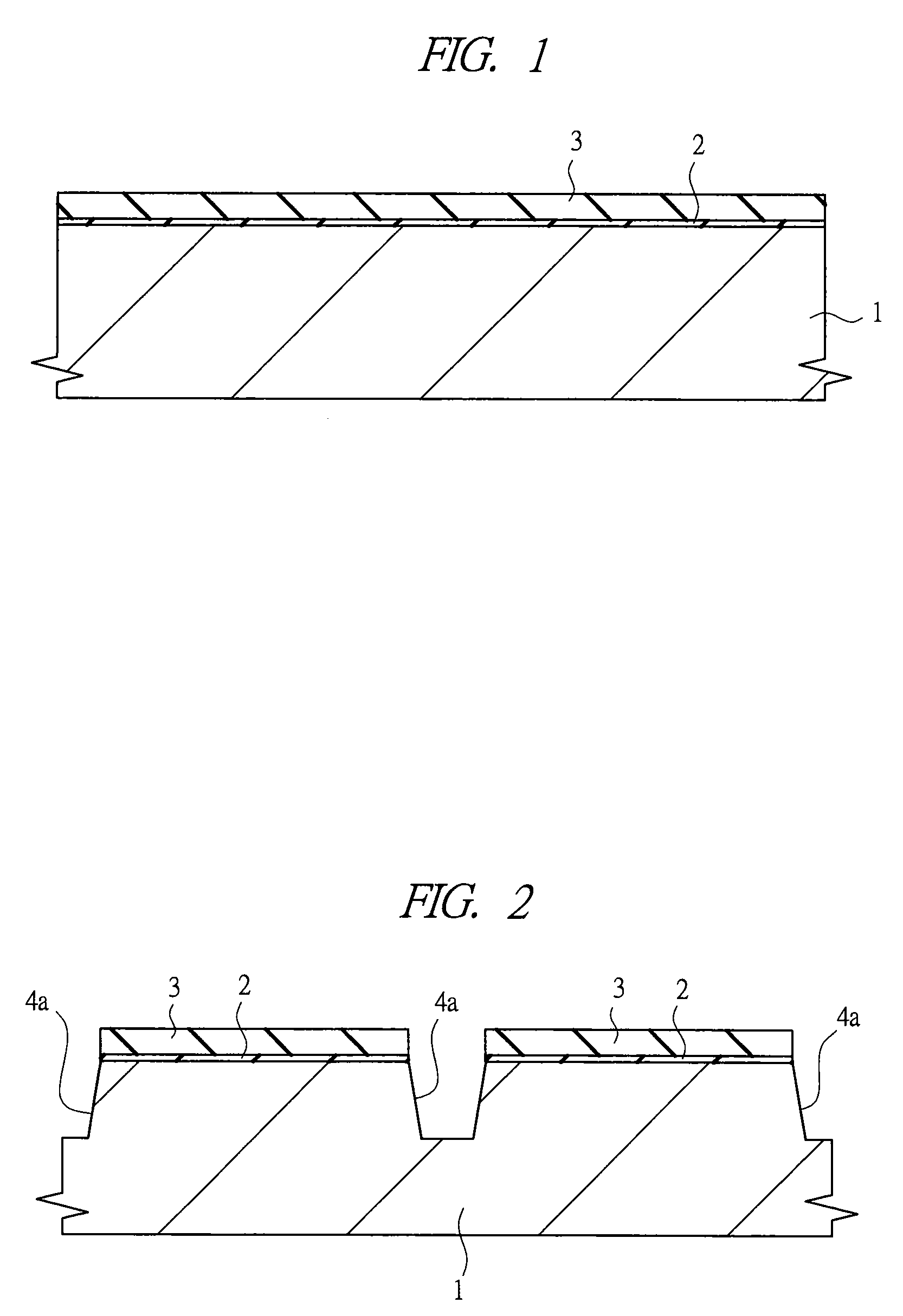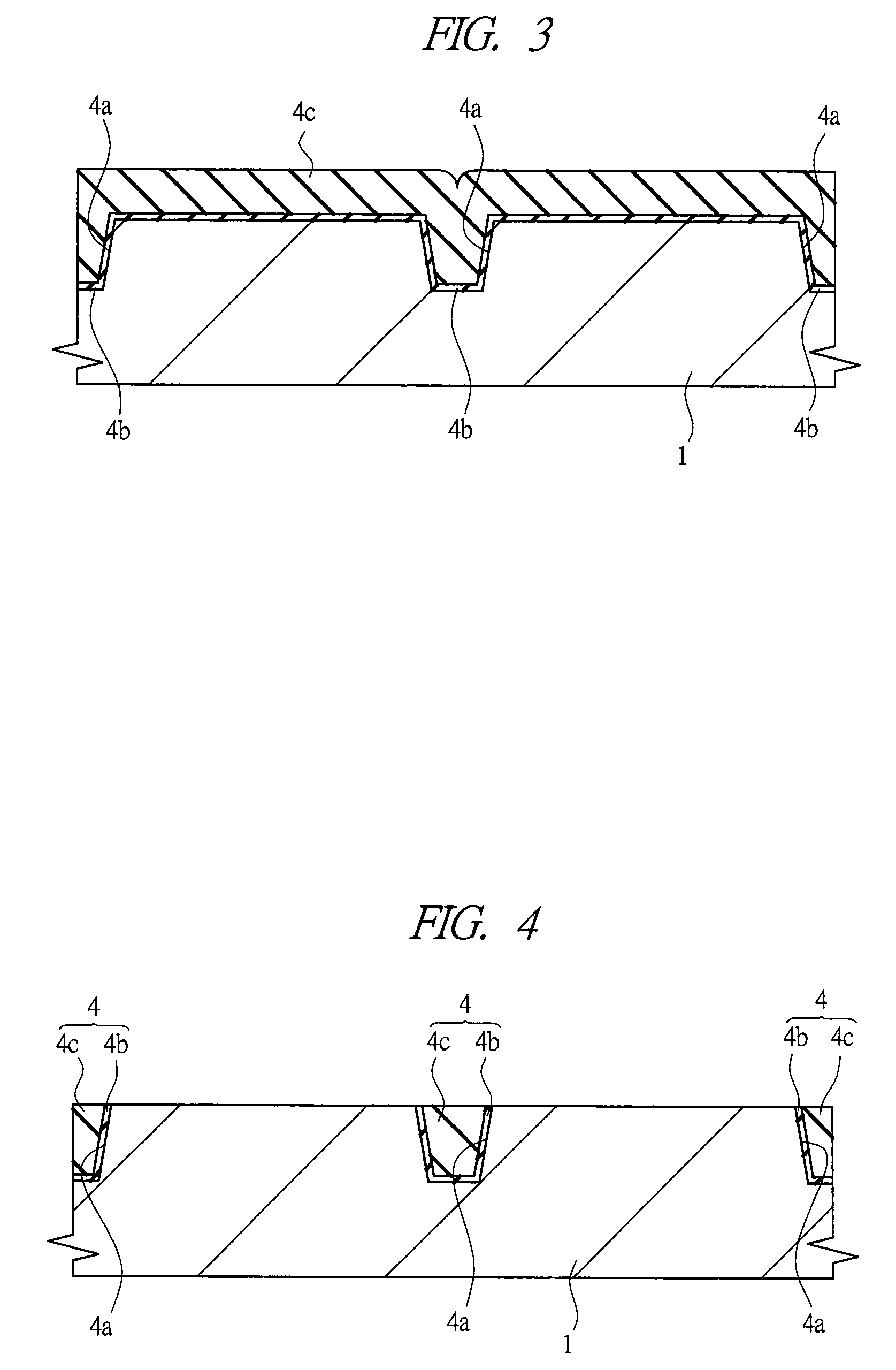Method of manufacturing semiconductor device
a manufacturing method and semiconductor technology, applied in the direction of semiconductor devices, electrical devices, transistors, etc., can solve the problems of inability to provide high-speed operations, increase the resistance of gate and source/drain, etc., to improve the reliability of the semiconductor device and improve the performance of the semiconductor devi
- Summary
- Abstract
- Description
- Claims
- Application Information
AI Technical Summary
Benefits of technology
Problems solved by technology
Method used
Image
Examples
first embodiment
[0092]Manufacturing steps of a semiconductor device according to a present embodiment will be described with reference to the drawings. FIG. 1 to FIG. 8 are cross-sectional views of main parts showing the manufacturing steps of the semiconductor device according to an embodiment of the present invention, for example, a semiconductor device having a CMISFET (Complementary Metal Insulator Semiconductor Field Effect Transistor).
[0093]First, as shown in FIG. 1, a semiconductor substrate (semiconductor wafer) 1 made of p-type single crystal silicon and the like having a resistivity of, for example, about 1 to 10 cm is provided. Next, the semiconductor substrate 1 is subjected to heat oxidation and an insulating film 2 having a thickness of, for example, about 11 nm is formed on the surface of the semiconductor substrate 1, and on an upper layer thereof, an insulating film 3 having a thickness of, for example, about 90 nm is deposited by a CVD (Chemical Vapor Deposition) method and the li...
second embodiment
[0258]FIG. 31 is a manufacturing process flow showing a part of the process of manufacturing a semiconductor device according to the present embodiment and corresponds to FIG. 9 of the above first embodiment. In FIG. 31, a manufacturing process flow in a process is shown where a metal silicide layer (metal / semiconductor reaction layer) is formed on the surface of gate electrodes 8a, 8b, n+ type semiconductor region 9b and p+ type semiconductor region 10b by salicide process after the structure of above FIG. 7 is obtained. FIG. 32 to FIG. 35 are cross-sectional views of main parts of the semiconductor device in the manufacturing process of the present embodiment.
[0259]The process of manufacturing the semiconductor device according to the present embodiment is same to the process of the above first embodiment until the process in which wet cleaning is carried out in the above step S4, and thereby the barrier film 13 and the unreacted metal film 12 are removed. Therefore, the explanati...
third embodiment
[0274]In a further study on the process of the comparative example of above described FIG. 18 to FIG. 21, the inventors have found that, in the source / drain of a p-channel type MISFET, the increase of the junction leakage current and the unevenness of the junction leakage current (the change of the junction leakage current in every transistor) are more likely to occur than in an n-channel type MISFET.
[0275]To reduce the above junction leakage current, it is effective to thin the thickness of Ni film 112 to be deposited on the semiconductor substrate 1 so that the thickness of nickel silicide layer 141b is thinned. However, the nickel silicide layer 141b is arranged for lowering resistance. Therefore, if the thickness of the nickel silicide layer 141b is made thin in both of the n-channel type MISFET and the p-channel type MISFET, the effect of lowering resistance by the nickel silicide layer 141b is weakened even in the n-channel type MISFET in which influence is hardly occurred to ...
PUM
| Property | Measurement | Unit |
|---|---|---|
| temperature | aaaaa | aaaaa |
| temperature | aaaaa | aaaaa |
| temperature | aaaaa | aaaaa |
Abstract
Description
Claims
Application Information
 Login to View More
Login to View More - R&D
- Intellectual Property
- Life Sciences
- Materials
- Tech Scout
- Unparalleled Data Quality
- Higher Quality Content
- 60% Fewer Hallucinations
Browse by: Latest US Patents, China's latest patents, Technical Efficacy Thesaurus, Application Domain, Technology Topic, Popular Technical Reports.
© 2025 PatSnap. All rights reserved.Legal|Privacy policy|Modern Slavery Act Transparency Statement|Sitemap|About US| Contact US: help@patsnap.com



